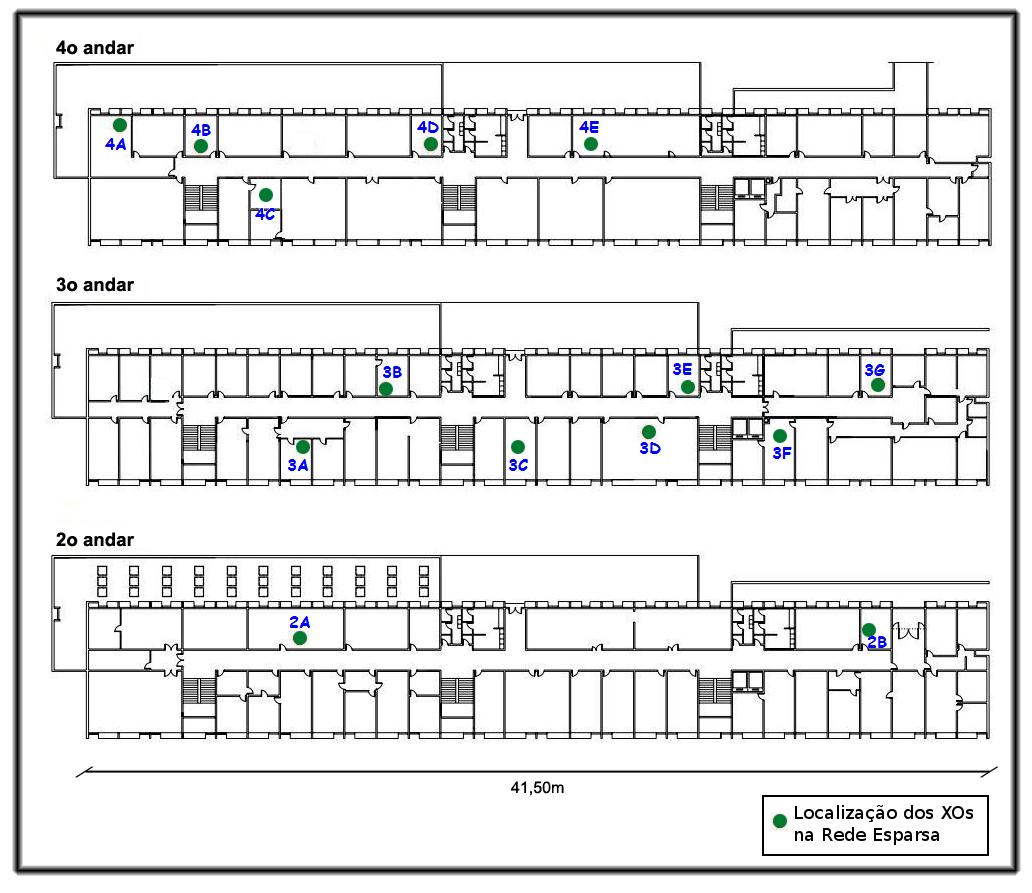Wireless Sparse Testbed: Difference between revisions
(New page: This page is dedicated to the Tested installed at Universidade Federal Fluminense, Brazil. Professor Luiz Magalhães and a group of students of Laboratório Midiacom, with the participati...) |
|||
| (3 intermediate revisions by 2 users not shown) | |||
| Line 1: | Line 1: | ||
This page is dedicated to the |
This page is dedicated to the TestBed installed at Universidade Federal Fluminense, Brazil. |
||
Professor Luiz Magalhães and a group of students of Laboratório Midiacom, with the participation of Ricardo Carrano, from OLPC, built this testbed that is designed to study the behavior of a sparse mesh network, and answer the following questions: |
Professor Luiz Magalhães and a group of students of Laboratório Midiacom, with the participation of Ricardo Carrano, from OLPC, built this testbed that is designed to study the behavior of a sparse mesh network, and answer the following questions: |
||
| Line 9: | Line 9: | ||
* What is the efficiency of the current multicast implementation? |
* What is the efficiency of the current multicast implementation? |
||
* How OLPC-Mesh compares to the current 802.11s implementation on the Linux Kernel? |
* How OLPC-Mesh compares to the current 802.11s implementation on the Linux Kernel? |
||
The testbed is currently composed of 12 B2-1 prototypes, running the 8.2 distro in a non-gui runlevel. |
|||
[[Image:Sparse_testbed.jpg]] |
|||
=== Testbed Journal === |
|||
Oct, 16 - More nodes are being added to connect the cloud, currently there are 3 disconnected sectors |
|||
Nov 1-15 - Two more nodes were added to the testbed in order to connect the disconnected sectors. Now, it is possible to ping a node from any other node in the testbed. Tests were performed (throughput, latency, packet loss) between nodes 4C and 2A with poor results (losses ranging from 30% to 90%). The group started to investigate the reasons of the poor connectivity (interference, busy spectrum, route churnning, etc). |
|||
Latest revision as of 14:01, 19 November 2008
This page is dedicated to the TestBed installed at Universidade Federal Fluminense, Brazil.
Professor Luiz Magalhães and a group of students of Laboratório Midiacom, with the participation of Ricardo Carrano, from OLPC, built this testbed that is designed to study the behavior of a sparse mesh network, and answer the following questions:
- Is a sparse network feasible? What are the practical distances and what can be expected in term of throughput and latency?
- How does the shared Internet mechanisms (aka MPP) behave and what happens when you have multiple gateways?
- What is the effect of mobility on a sparse network?
- What is a good adaptive behavior to multicast/broadcast transmission rates?
- What is the efficiency of the current multicast implementation?
- How OLPC-Mesh compares to the current 802.11s implementation on the Linux Kernel?
The testbed is currently composed of 12 B2-1 prototypes, running the 8.2 distro in a non-gui runlevel.
Testbed Journal
Oct, 16 - More nodes are being added to connect the cloud, currently there are 3 disconnected sectors
Nov 1-15 - Two more nodes were added to the testbed in order to connect the disconnected sectors. Now, it is possible to ping a node from any other node in the testbed. Tests were performed (throughput, latency, packet loss) between nodes 4C and 2A with poor results (losses ranging from 30% to 90%). The group started to investigate the reasons of the poor connectivity (interference, busy spectrum, route churnning, etc).
